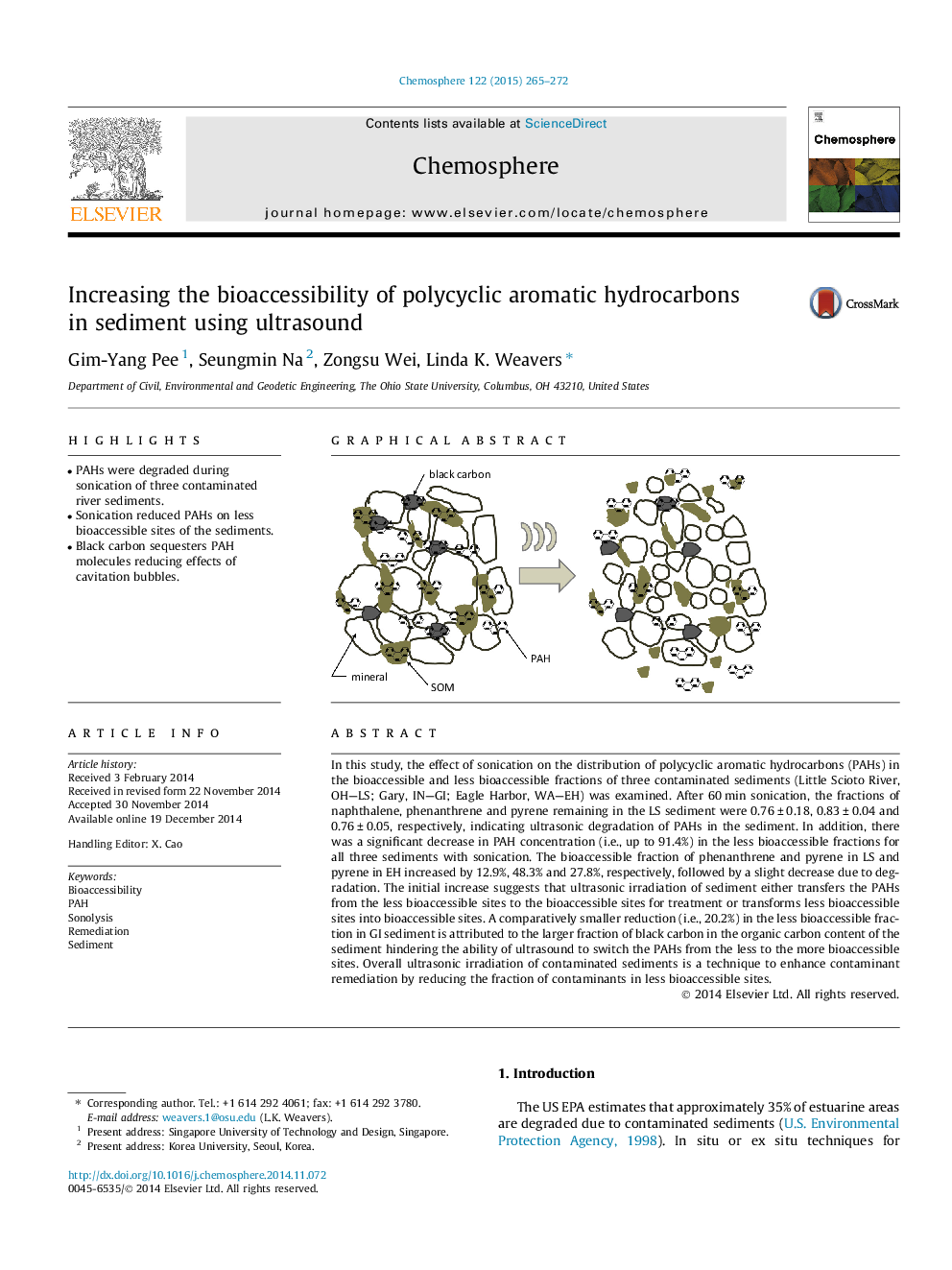| کد مقاله | کد نشریه | سال انتشار | مقاله انگلیسی | نسخه تمام متن |
|---|---|---|---|---|
| 4408402 | 1618849 | 2015 | 8 صفحه PDF | دانلود رایگان |
• PAHs were degraded during sonication of three contaminated river sediments.
• Sonication reduced PAHs on less bioaccessible sites of the sediments.
• Black carbon sequesters PAH molecules reducing effects of cavitation bubbles.
In this study, the effect of sonication on the distribution of polycyclic aromatic hydrocarbons (PAHs) in the bioaccessible and less bioaccessible fractions of three contaminated sediments (Little Scioto River, OH—LS; Gary, IN—GI; Eagle Harbor, WA—EH) was examined. After 60 min sonication, the fractions of naphthalene, phenanthrene and pyrene remaining in the LS sediment were 0.76 ± 0.18, 0.83 ± 0.04 and 0.76 ± 0.05, respectively, indicating ultrasonic degradation of PAHs in the sediment. In addition, there was a significant decrease in PAH concentration (i.e., up to 91.4%) in the less bioaccessible fractions for all three sediments with sonication. The bioaccessible fraction of phenanthrene and pyrene in LS and pyrene in EH increased by 12.9%, 48.3% and 27.8%, respectively, followed by a slight decrease due to degradation. The initial increase suggests that ultrasonic irradiation of sediment either transfers the PAHs from the less bioaccessible sites to the bioaccessible sites for treatment or transforms less bioaccessible sites into bioaccessible sites. A comparatively smaller reduction (i.e., 20.2%) in the less bioaccessible fraction in GI sediment is attributed to the larger fraction of black carbon in the organic carbon content of the sediment hindering the ability of ultrasound to switch the PAHs from the less to the more bioaccessible sites. Overall ultrasonic irradiation of contaminated sediments is a technique to enhance contaminant remediation by reducing the fraction of contaminants in less bioaccessible sites.
Figure optionsDownload as PowerPoint slide
Journal: Chemosphere - Volume 122, March 2015, Pages 265–272
